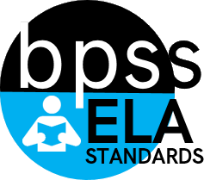ELA-11.W.04
|
11th Grade ELA Targeted Standards
[W] Writing Strand
Cluster: Production and Distribution of Writing
ELA-11.W.04-.06
-
W11-12.4 Produce clear and coherent writing in which the development, organization, style, and format (e.g., MLA, APA) are appropriate to a range of tasks, purposes, and audiences.
-
W11-12.5 Develop and strengthen writing as needed by planning, revising, editing, rewriting, or trying a new approach, focusing on addressing what is most significant for a specific purpose and audience. (Editing for conventions should demonstrate command of Language standards 1-3).
-
W11-12.6 Use technology to produce, publish, and update individual or shared writing products, including new arguments or information. Use technology’s capacity to link to other information and to display information flexibly and effectively.
|
Student Learning Targets:
Product Targets
- I can develop grade-level appropriate writing.
Proficiency Scale
| Measurement of Progress |
Production & Distribution
-
W11-12.4 Produce clear and coherent writing in which the development, organization, style, and format (e.g., MLA, APA) are appropriate to a range of tasks, purposes, and audiences.
-
W11-12.5 Develop and strengthen writing as needed by planning, revising, editing, rewriting, or trying a new approach, focusing on addressing what is most significant for a specific purpose and audience. (Editing for conventions should demonstrate command of Language standards 1-3).
-
W11-12.6 Use technology to produce, publish, and update individual or shared writing products, including new arguments or information. Use technology’s capacity to link to other information and to display information flexibly and effectively.
|
Sample Activity
|
| Advanced |
In addition to expectations of proficiency, student provides consistent evidence of in-depth inferences and applications that go beyond what was taught and expected |
|
| Proficient |
The student demonstrates no major errors or omissions regarding any of the information and processes that were end of instruction expectations.
The student can
-
produce clear and coherent writing in which development, organization, and style are appropriate to task, purpose, and audience.
-
develop and strengthen writing as needed by planning, revising, editing, rewriting, or trying a new approach, addressing those aspects which matter most to the purpose, audience, and context of the writing.
-
use technology to enhance writing by collaborating and revising in response to ongoing feedback or new information.
|
|
| Progressing |
There are no major errors or omissions regarding the simpler details and processes as the student:
-
produces writing in which development, organization, and style are appropriate to task, purpose, and audience.
-
develops and strengthens writing as needed by planning, revising, editing, rewriting.
-
uses technology to generate and revise writing based on collaborative feedback.
-
recognizes or recalls specific terminology that relates to production and distribution of writing, such as: coherent, style, task, purpose, audience, revise, edit, feedback.
However, the student exhibits major errors or omissions regarding the more complex ideas and processes.
|
|
| Novice |
With help, the student demonstrates a partial understanding of some of the simpler details and processes and some of the more complex ideas and processes. |
- |
Resources
Websites
Vocabulary |

